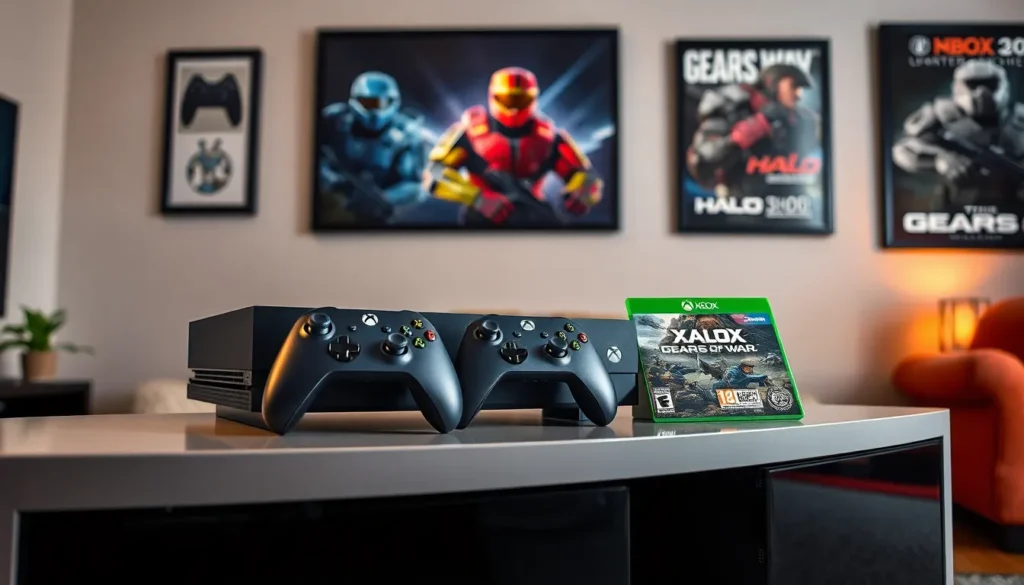Table of Contents
ToggleIn a world where instant gratification reigns supreme, nothing’s more frustrating than a laggy mobile device. Picture this: you’re about to score the winning point in your favorite game, and suddenly, the screen freezes like it’s contemplating life choices. It’s enough to make anyone throw their phone across the room—don’t worry, it happens to the best of us!
Understanding Mobile Lag
Mobile lag occurs when a device experiences delays in response time, disrupting activities and contributing to user frustration. Identifying its sources helps in addressing performance issues effectively.
What Causes Mobile Lag?
Multiple factors contribute to mobile lag. Heavy applications demand significant processing power, making devices struggle to keep up. Limited storage space leads to slower data retrieval processes. Background processes consume resources, reducing available memory for active tasks. Additionally, outdated software may not optimize new features, causing inefficiencies. Poor internet connectivity can hinder app functionality, especially for online activities. These elements combine to create a sluggish experience.
Impact on User Experience
Lag negatively affects user experience, leading to frustration and dissatisfaction. Tasks become tedious with constant interruptions, whether during gaming, browsing, or messaging. Users may abandon applications that don’t perform smoothly, opting for alternatives. Increased wait times can deter productivity, impacting both personal and professional tasks. Users often perceive lag as a sign of low-quality devices. Ultimately, lag demotivates engagement and reduces overall satisfaction with mobile technology.
Common Solutions for Mobile Lag

Mobile lag can disrupt the user experience significantly, but several effective solutions exist.
Software Adjustments
Updating software often resolves lag issues. Users should check for operating system updates regularly, as these patches can enhance performance. Clearing app caches helps by freeing up resources. Disabling background apps minimizes resource consumption, allowing the device to focus on active tasks. Modifying animation settings also boosts responsiveness; reducing or turning off animations can create a smoother experience. Additionally, uninstalling unnecessary applications frees up storage, improving device performance.
Hardware Upgrades
Upgrading hardware can greatly enhance device speed. Adding more RAM increases multitasking capabilities, significantly reducing lag during heavy application usage. Replacing the existing hard drive with a solid-state drive (SSD) provides faster data access, resulting in quicker load times for apps. If battery health declines, swapping out an old battery can improve performance. Finally, investing in a newer device with advanced specifications directly addresses lag, ensuring a smoother overall user experience.
Best Mobile Lag Fix Techniques
Addressing mobile lag requires a blend of software and hardware solutions that improve performance and enhance user satisfaction. The following techniques offer effective ways to tackle this issue.
Clearing Cache and Data
Regularly clearing cache and data can significantly enhance device performance. Cached files can accumulate over time, consuming valuable storage resources. To clear cache, users can navigate to the app settings and select the option for storage. This step helps remove temporary files that apps no longer need. Additionally, performing a data clear resets the app to its default state, freeing up space and optimizing speed. Implementing this simple action frequently keeps devices running smoothly and reduces instances of lag.
Disabling Unused Applications
Disabling unused applications contributes to a faster mobile experience. Background apps consume processing power and memory. Users can identify apps that run inconsistently or haven’t been used in weeks or months. By disabling or uninstalling these applications, devices allocate resources more effectively. This action leads to improved responsiveness and overall performance. A streamlined app list not only boosts speed but also minimizes distractions, allowing users to focus on essential tasks.
Recommended Tools and Apps
Several tools and apps effectively reduce mobile lag, enhancing the overall experience of device users. Performance boosters and system cleaners rank among the most useful applications.
Performance Boosters
Performance boosters optimize device speed by reallocating system resources. Apps like Game Booster temporarily suspend background processes and prioritize gaming resources, ensuring smoother gameplay. Speed Booster also helps by clearing RAM to enhance multitasking capabilities. CCleaner not only boosts performance but also provides detailed insights into app performance, allowing proactive management. Users often report significant improvements in app launch times and reduced lags during high-demand activities.
System Cleaners
System cleaners play a critical role in maintaining mobile device efficiency. SD Maid clears unnecessary files while managing storage effectively. Files by Google simplifies storage management by automatically recommending files to delete based on usage patterns. Droid Optimizer focuses on eliminating cached data from applications, which often takes up space without providing any benefit. Regularly using these cleaners ensures devices remain clutter-free, allowing for optimal performance.
Addressing mobile lag is essential for a seamless user experience. By implementing the strategies outlined in the article, users can significantly improve their device’s performance. Regular software updates and clearing unnecessary files are simple yet effective steps that can lead to noticeable enhancements.
Utilizing performance-boosting apps further optimizes resources, ensuring devices run smoothly. Whether through hardware upgrades or efficient software management, taking proactive measures against lag can transform frustrating moments into enjoyable interactions. Embracing these solutions not only enhances productivity but also elevates overall satisfaction with mobile technology.




